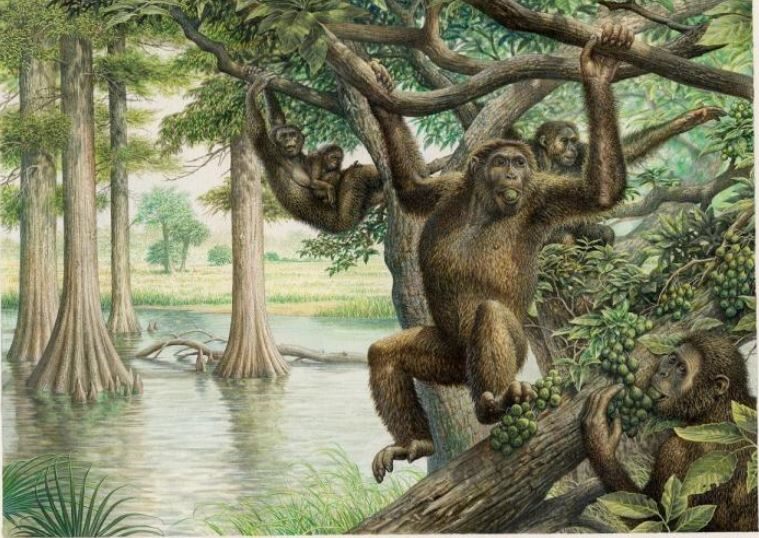Fox News Flash top headlines for Sept. 18
Fox News Flash top headlines for Sept. 18 are here. Check out what’s clicking on Foxnews.com
A 10-million-year-old fossilized ape has given scientists new insights into human evolution.
The ape skeleton, known as Rudapithecus, was initially discovered in Hungary; its preserved pelvis was studied by an international team of researchers, who found that human bipedalism — locomotion on two legs – might have deeper ancestral origins than previously thought.
"Rudapithecus was pretty apelike and probably moved among branches like apes do now — holding its body upright and climbing with its arms," Carol Ward, a curators distinguished professor of pathology and anatomical sciences in the MU School of Medicine and lead author on the newly published study, said in a statement.

Rudapithecus was pretty apelike and probably moved among branches like apes do now — holding its body upright and climbing with its arms.
(Illustration courtesy of John Sibbick)
"However, it would have differed from modern great apes by having a more flexible lower back, which would mean when Rudapithecus came down to the ground, it might have had the ability to stand upright more like humans do. This evidence supports the idea that rather than asking why human ancestors stood up from all fours, perhaps we should be asking why our ancestors never dropped down on all fours in the first place."
Modern African apes typically have a long pelvis and short lower back because they are such large animals, which is one reason why they generally walk on all fours when on the ground.
However, humans have longer, more flexible lower backs, allowing them to stand upright and walk on two legs easily.
Ward explained that if humans evolved from an African apelike body build, substantial changes to lengthen the lower back and shorten the pelvis would have been required.

A fossil pelvis from Rudapithecus. The pelvis is among the most informative bones of a skeleton, but one that is rarely preserved.
(Carol Ward)
But if humans evolved from an ancestor more like Rudapithecus, this transition would have been much more straightforward.
The study was published on Tuesday in the Journal of Human Evolution.
Source: Read Full Article

